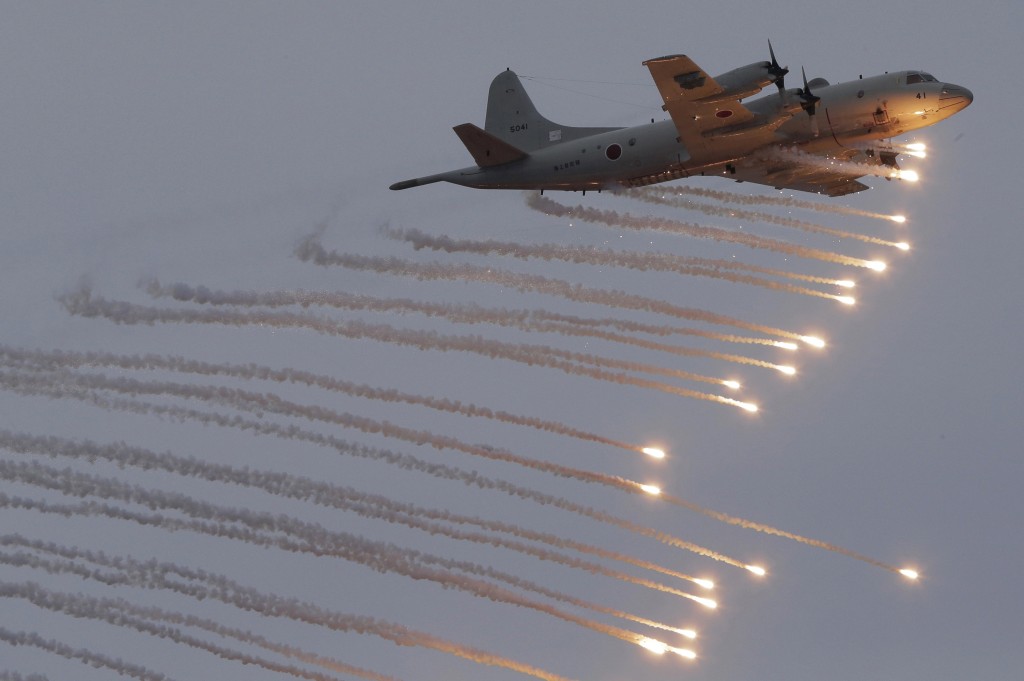PH, Japan defy China for 2nd straight day
PUERTO PRINCESA CITY, Philippines— Japan and the Philippines flew patrol planes near disputed South China Sea waters for a second straight day on Wednesday, despite Chinese criticism of this week’s air and sea exercises.
A Japanese P-3C Orion and a Philippine Navy Islander conducted a search-and-rescue drill 93 kilometers northwest of Palawan province, officials said.
The flight was in the general direction of the resource-rich Recto Bank (Reed Bank) claimed by both the Philippines and China, but officials refused to say if the planes flew directly over the area.
The Philippines is also holding separate exercises with longtime ally the United States off Palawan this week, as it seeks to bolster alliances in the face of its territorial dispute with China in the South China Sea.
China’s claim over almost the entire South China Sea overlaps with those of the Philippines, Vietnam, Brunei, Malaysia and Taiwan.
Beijing has intensified construction of artificial islands on reefs to reinforce its claim, sparking protests from the United States and Japan as well as regional powers.
China has a separate dispute with Japan over an island chain in the East China Sea known to Chinese as Diaoyus and to the Japanese as Senkakus.
Beijing has declared an air defense identification zone in the area, drawing opposition from Japan, the United States and other countries.
The Philippines fears China could declare a similar defense zone in the South China Sea, which could cut it off from parts of its territory in the Spratly archipelago, while Japan worries that China’s dominance in the waterway could affect its trade in the region and beyond.

The P-3C anti-submarine patrol plane fires flares during fleet review off Sagami Bay, south of Tokyo. The Japanese military plane is being used for maritime search-and-rescue drills in Palawan. AP FILE PHOTO
China warning
Following a similar flight on Tuesday by Philippine and Japanese aircraft, Chinese foreign ministry spokesperson Lu Kang cautioned countries involved in the naval drills against playing them up, suggesting they could undermine stability in the region.
Beijing hoped “relevant countries will not hype up the tensions in the region,” Lu said.
Tuesday’s flight went 1,524 meters above the edge of Recto Bank, where the participants “practiced search and rescue patterns,” the Philippines’ Marine Col. Jonas Lumawag said.
Successful drill
The Japanese Maritime Self-Defense Force commander, Hiromi Hamano, told reporters that Wednesday’s joint training exercise—which he termed a humanitarian and disaster response drill—was a success, shortly after the Orion landed at a Philippine air base in Palawan.
“I think it is important to continue HADR (humanitarian and disaster response), SAR (search and rescue) training with the Philippine Navy,” Hamano told reporters.
The Philippine Navy said the drill was a search-and-rescue exercise.
“It should not be taken as an affront to any other and is an expression of cooperation and learning from all those involved,” said Cmdr. Lued Lincuna, a spokesperson for the Philippine Navy.
And a spokesperson for President Aquino said this week’s activities “should not be taken as an affront” to any other nation.
No spying
“The Philippines has had these exercises before with our strategic partners,” deputy presidential spokesperson Abigail Valte said in a statement.
A spokesperson for the Japanese defense department said the Orion was not used to spy over the South China Sea.
“The purpose of this exercise is to enhance the Japanese Maritime Self-Defense Force’s capabilities in humanitarian support and disaster relief, not to conduct surveillance activities,” she said.
The surveillance plane crew did not observe anything unusual in the waters, Hamano said.
Recto Bank lies about 153 km west of Palawan, within the Philippines’ 370-km exclusive economic zone.
An encounter near Recto Bank between a Chinese vessel and a survey ship contracted by Philippine firm Philex Petroleum in 2012 has stalled exploration in the area.
Strategic partnership
The Philippines and Japan are in the middle of their second joint naval drills this week, which followed historic first joint exercises last month.
The two former World War II foes are strengthening their strategic partnership in the face of China’s increasingly aggressive behavior in the East and South China Seas.
Earlier this month, Japanese and Filipino officials agreed to open talks toward the conclusion of a Visiting Forces Agreement (VFA) between Japan and the Philippines.
The Philippines already has VFAs with the United States and Australia. AFP
Originally posted as of 3:04 PM | Wednesday, June 24, 2015
RELATED STORIES
PH, Japan agree to exchange defense materiel